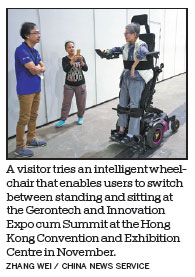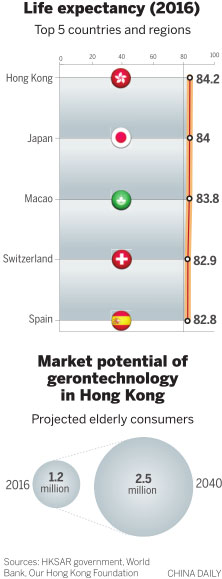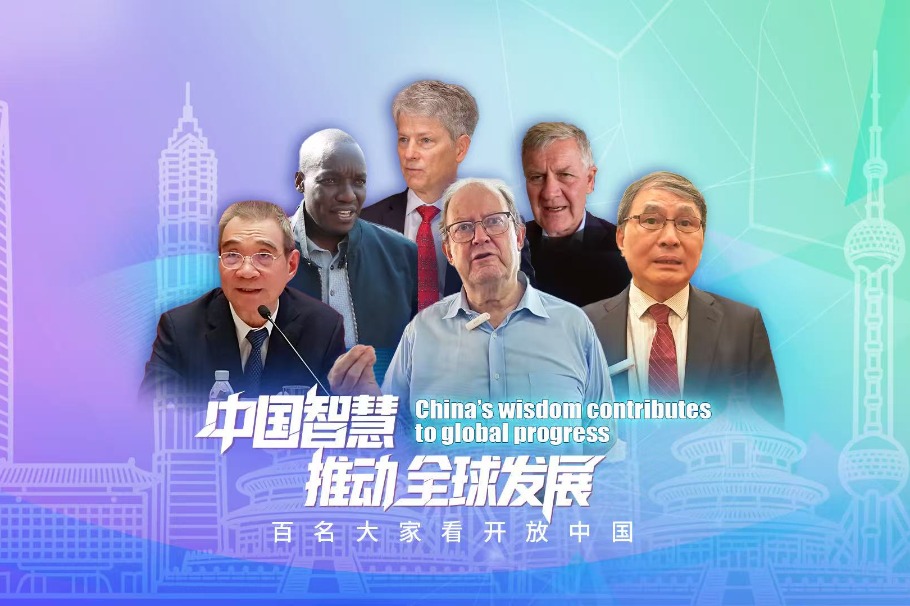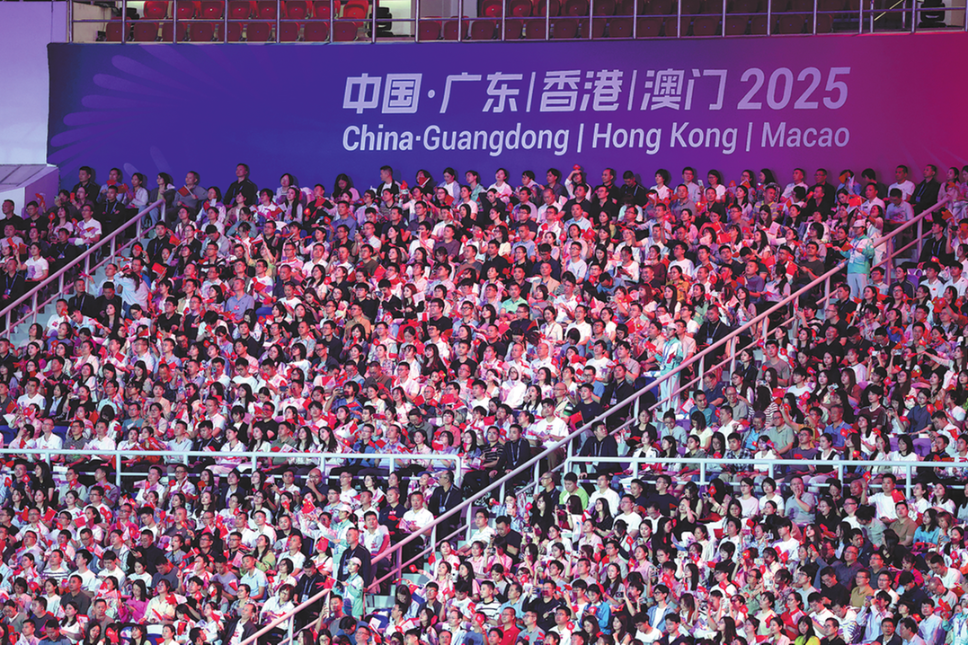Technology makes strides in eldercare
By Kathy Zhang in Hong Kong | China Daily | Updated: 2019-04-03 09:31
Editor's note: Countries and regions worldwide are facing challenges posed by aging populations. This is part of a series in which China Daily looks at the issue.
Hong Kong, which prides itself on life expectancy rates that are among the highest in the world, faces a number of population challenges that the maturing field of gerontechnology, which uses technology to address the needs of aging people, is expected to ease in the coming years.
Government projections expect that more than one-third of the population, or 2.37 million people, in the Hong Kong Special Administrative Region could be older than 65 by 2036.
The trend is coupled with the additional strain that a rapidly aging population has on the workforce and the financial demands of eldercare, giving rise to the wider use of an array of technological devices to help the elderly, according to the Hong Kong Society for the Aged.
The growing gerontechnology field, which combines gerontology and technology, includes motion-sensor games that are used at eldercare facilities to assist in rehabilitation activities, according to the group. One of the most popular such games is visual bowling, in which players stand in front of big screens and "throw" a virtual ball to score points.
The group's executive director, Maggie Leung Yee-mei, said the games add entertainment value to routine exercises. "The seniors' attitude toward exercise becomes more positive," she said. Virtual reality technology is also used in the treatment of Alzheimer's disease. Elderly people suffering from dementia are shown 3D images of scenes familiar to them, such as streets, parks and landmarks in the communities where they have lived. The exercises help awaken deep-seated memories, in turn helping to ease the symptoms of dementia, Leung said.
Virtual reality technology is also used in the treatment of Alzheimer's disease. Elderly people suffering from dementia are shown 3D images of scenes familiar to them, such as streets, parks and landmarks in the communities where they have lived. The exercises help awaken deep-seated memories, in turn helping to ease the symptoms of dementia, Leung said.
The society also uses imported equipment, but its chairman, Kim Mak Kin-wah, said many of the devices from overseas are too large for Hong Kong's comparatively smaller facilities.
Collaboration with science-technology enterprises has helped social service facilities to better understand elderly people and their caregivers, according to Mak.
"We know more about the demands and habits of the elderly and learn what users need," Mak said.
Gerontechnology is helping to modernize the eldercare field, making it less laborious and raising the sector to a higher standard of professionalism, according to Elderly Commission Chairman Lam Ching-choi.
In August, the nongovernmental organization Haven of Hope Christian Service, which provides eldercare and rehabilitation services in Hong Kong, signed an agreement with Hong Kong University of Science and Technology to jointly explore solutions for improving the quality of life for the elderly and their caregivers.
The two are in the discussion stage of seven projects. One is a study of the genetic risk factors for Alzheimer's disease among elderly Chinese. Another aims to develop a real-time 3D facial recognition system to detect symptoms related to the onset of mental and physical disease.

There will be more cross-sector collaboration, leading to the development of more user-friendly tech products for the local eldercare market, Mak said.
Government role
Lingnan University Vice-President Joshua Mok Ka-ho, a social policy specialist, said the challenge faced by the sector is to raise the awareness among seniors and front-line staff of the value of high-tech devices.
Lam, who is also a member of the Executive Council - the top policymaking advisory body to the chief executive of the Hong Kong SAR -said the first step is to encourage service providers to adopt tech devices for the aged.
Last year, the Hong Kong government set up the HK$1 billion ($127.4 million) Innovation and Technology Fund for Application in Elderly and Rehabilitation Care. The fund provides subsidies for eldercare and rehabilitation services units to procure, rent and test technological products.
The government's next step is to extend the subsidy to individual users, Lam said.
He said the government is considering allowing residents to rent the tech devices with community care vouchers from the government.
Eligible elderly people currently have access to different services -such as rehabilitation exercises, nursing care and personal care - in community centers or at homes with the vouchers.
Vivian Lou Wei-qun, director of the Sau Po Centre on Aging at the University of Hong Kong, expressed concerns that Hong Kong's eldercare sector lacks a clear plan to guide the development of gerontechnology, with the lack of a unified effort.
Lou suggested that the government take the lead and set more precise objectives for the development of the sector.
Lingnan University's Mok said the city's eldercare stakeholders should look into the experiences of different regions worldwide and apply them to Hong Kong based on its own conditions.
Easing the burden
Meeting the increasing demand for eldercare services will be another important element of gerontechnology amid a decline in the working population, analysts said.
In 2017, Hong Kong's Social Welfare Department surveyed the human resources of 69 nongovernmental eldercare providers. The institutions recorded an average vacancy rate of 18 percent for personal care workers.
High-tech products are expected to alleviate staff shortages, according to those in the industry. New devices will be able to monitor the health of elderly patients, with systems also allowing eldercare staff to keep a close watch on them. The technological devices promise to relieve the burden on human resources and be more efficient than human workers in various aspects.
A number of nursing homes in the region have reported using anti-wandering and tracking garments for some of their elderly residents affected by dementia. The radio frequency identification devices trigger alarms if the seniors wander out of designated areas.
Similarly, wearable robotic lifts assist caregivers by reducing the strain of lifting seniors onto and off of beds, according to specialists.
However, the advances in technology can never remove the necessity for human staff, and eldercare in Hong Kong will still need to attract more young people, with their participation in the sector vital to its development, Mok said.
























